The Healthcare Revolution
By Joseph Greenberg
The rise of the ‘medical mall’
Japan’s demographic problems are putting pressure on the healthcare system and the government seems to be endlessly chasing its own tail in its efforts to implement secure financial and organizational solutions. For example, in making more funds Some Japanese companies are bringing new techniques and practices to the table in order to create viable healthcare alternativesavailable for care of the elderly it has been sharply criticized for poor performance on quotidian care functions such as child delivery and ER. A Fire and Disaster Management Agency survey of last year reported 14,387 cases in which patients in ambulances were refused admittance to institutions more than three times before finally being accepted. Behind this lies a worrying shortage of doctors which puts even greater pressure on financial resources and is ultimately a threat to any citizen requiring medical attention; the OECD average doctor per people ratio for industrial nations is 3:1000, Japan falls below this with a ratio of only two doctors per 1,000 people and comes in at 27th out of 30 for industrial nations.
However, the market has responded to the problems and some Japanese companies are bringing new techniques and practices to the table in order to create viable healthcare alternatives. The future of healthcare in Japan looks to be one of improvement and innovation. Dissatisfaction with the level of medical service and the government’s funding woes has provided an opportunity, and arguably a need, for high quality healthcare services to set up in Japan. An example of this new trend is the Osaki ‘DOKTORS’ medical center, opened in November of last year. Although it’s only been several months since this cutting-edge medical facility has gone into business, all clinics are already in the black—a striking fact given the sharp increase in hospital bankruptcies. The Osaki center has been highlighted because of its cutting-edge recognition for the need to actively provide preventative medicine, care for lifestyle-related illnesses, stress, insomnia and sleep apnea, healthcare for women and non-Japanese residents.
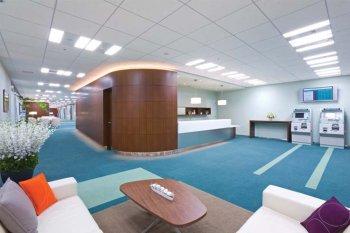 The relaxing interior of ‘DOKTORS’ Osaki -- Images courtesy of MEDICAL Hi-NET CO, LTD
The relaxing interior of ‘DOKTORS’ Osaki -- Images courtesy of MEDICAL Hi-NET CO, LTD
The recent opening of the ‘DOKTORS’ medical center, along with other similar ‘medical centers,’ such as the Roppongi Midtown Medical Center, signals a shift in the nature of healthcare services in Japan. As the government get more and more in a tangle, it is fair to say that there is something of a revolution taking place. Hiroyuki Miyagawa, President of Osaki Medical Mall’s management company, ‘DOKTORS Osaki,’ provided consulting for the medical center opened in Roppongi’s Midtown complex in 2007. He told us: “Japan is a little behind the United States in providing modern medical care facilities. A place like the Midtown Center is naturally attractive to non-Japanese residents; the majority of staff are bilingual, the doctors are excellent, and the healthcare provider’s name is well-known. A place like this is also becoming more attractive to Japanese.”
The health-wealth nexus
As with any market, it is the dynamic intersection between demand and supply that ultimately dictates the delivery of the products, and healthcare is a case in point. Miyagawa’s observation that the medical mall suits both patients and practitioners alike is critical. If consumers are demanding more convenient, bilingual and multi-capacity medical centers, this creates a potentially lucrative market for developers, recruiters and individual physicians.
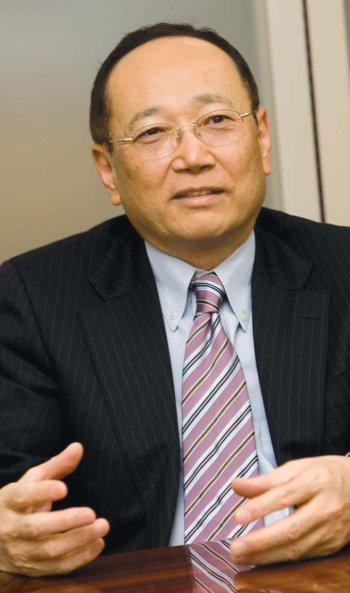 President MEDICAL Hi-NET CO, LTD: Hiroyuki Miyagawa -- Photography by Christopher Jue
President MEDICAL Hi-NET CO, LTD: Hiroyuki Miyagawa -- Photography by Christopher Jue
In Japan, most people have public health insurance that covers a majority percentage of medical costs, up to 70%. However, medical malls that focus on convenience, speed and quality appeal to busy office workers because they can provide a onestop service with the outpatient faculty of a general hospital.
For private doctors, catching office workers and the corporate end of the market is highly desirable. However, rents are highest in the business districts and even if a physician can meet the real estate overheads, marketing can be crippling. There is therefore a lot of attraction for such doctors in renting clinic space in a medical mall. The rent is high but the physicians buy their way into a key downtown location, gain exposure to a constant stream of people coming into their vicinity and the marketing is all taken care of by the mall operator, often being able to generate significant media attention.
These are the building blocks behind Medical Hi-Net’s Osaki facility. This slick looking building (shown on the cover), located in the heart of a busy business district on Tokyo’s Yamanote line, is called the ‘Think- Park’ Tower and opened in November 2007. The ThinkPark ‘DOKTORS’ medical center offers the full works: annual checkups, family health, cardiology, psychiatry, gynecology, rheumatology, dentistry and much more. At this institution in central Tokyo bilingual Japanese doctors who have studied in the US and have overseas experience are welcomed. With 300,000 people passing through Osaki train station and 10,000 workers based at the ThinkPark Tower, the physicians are kept busy—a typical dentist there receives up to 150 patients a day, a figure unheard of for independent operators. The center takes up 1600m 2, contains a total of seven clinics offering 19 different types of medical fields and among its 78 staff, employs doctors, nurse, dentists, pharmacists and dietitians—quite out of the mold of a regular general practice.
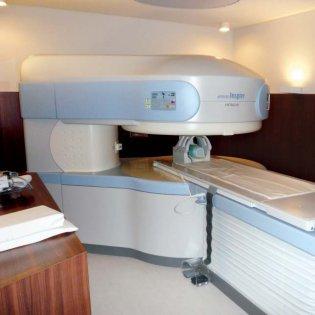 An open style, cutting edge MRI Scanner
An open style, cutting edge MRI Scanner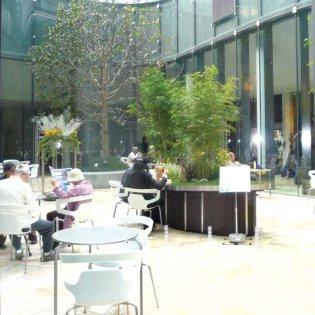 The leafy courtyard of ThinkPark
The leafy courtyard of ThinkPark
Leading the region
As well as its presence in Osaki, Medical Hi-Net are well established in Japan. Miyagawa managed the membership-only heath services group at St Luke’s Hospital in Tokyo and the company has started to supply bilingual foreign-trained medical staff to general hospitals across Japan. Its first large-scale medical center was established in Marunouchi OAZO in the heart of Tokyo’s financial district and at the same time the company went to the Mayo Clinic in Minnesota where it learned management techniques to apply to its business in Japan. Expansion then came rapidly with the planning of ThinkPark starting in 2005, office expansion in Yurakucho, consulting on the establishment of the Midtown Medical Center and the opening of branch offices in Osaka, Fukuoka and Sapporo.
As a company, growth has been fast and thus capitalization increased from ¥98 million in July 2005 to ¥375.25 million by October 2007. But Miyagawa’s vision is ambitious and, at the time of writing, he has just returned from a trip to Shanghai where Medical Hi-Net is exporting its business model. Just as some foreigners in Japan are wary of using local facilities, overseas Japanese, particularly in Asia, have grave concerns about the local services available and many of them return to Japan if they have any serious difficulties. In Shanghai, with 50,000 expatriate Japanese, Miyagawa sees a clear opening for the company to serve the community.
The difficulties of setting up a medical center in China are essentially related to licenses. However, after extensive research and consulting Miyagawa has found a way: working side-by-side with a hospital in Shanghai—a local clinic where doctors with a Japanese medical license can work, and also in association with the medical school of a Japanese university Medical Hi-Net are looking forward to the grand opening of the clinic in 2009.
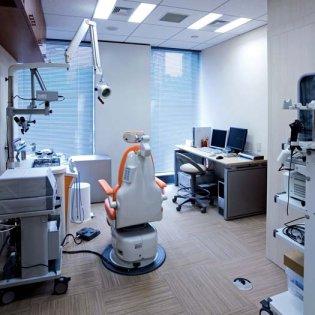 State-of-the-art medical devices in a 21st century examination room
State-of-the-art medical devices in a 21st century examination room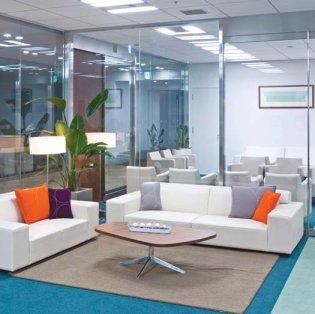 The lounge style waiting room
The lounge style waiting room
After Shanghai, Miyagawa has his eyes on Singapore, Hong Kong, Bangkok and Jakarta: “The Japanese doctors in these locations are high skilled and have a sophisticated level of technology available at their fingertips—they will serve not only local overseas Japanese communities but also become well known as centers of excellent healthcare services by the entire resident population.”
But won’t staffing be a problem? While English capable Japanese doctors are not easy to find it is harder to find US doctors that also speak Japanese or Japanese doctors that speak, for example, Thai. Miyagawa believes the solution lies in good partnerships with local institutions and his connections in medical communities worldwide. He maintains strong connections with Japanese doctors in the US and has good relations with a range of Japanese, Chinese and other Asian clinics, hospitals and societies. Recruitment is after all the service that they started with and before they started their own medical mall development and operations. Concerning the need for less widely spoken languages, Miyagawa perceives that bilingual English-speaking doctors are necessary as there appears to be no slowdown in English becoming the international language. “We need to be careful about immigration and licensing laws but I have seen the business grow in Japan and believe that although it was a slow starter itself, Japan is in a good position to lead the region in the healthcare revolution.” JI
Contact details
Medical Hi-Net
Sanshi Kaikan 2F
1-9-4 Yurakucho
Chiyoda-ku, Tokyo
100-0006
Tel: +81-3-5224-3555
www.medicalhi-net.co.jp







Comments
Veronica D. G. (not verified)
July 21, 2008 - 21:01
Permalink
Foreign physicians in Japan
Miyagawa's initiative looks promising to us expats. However he speaks about bilingual staff, not foreign practitioners.
I am still curious. I read something around 2003 about Koizumi's deregulation of the medical sector. I do not know what happened later.
We foreigners would welcome a little bit more of "foreign" offer too.
Is it still difficult for N-J MDs work in Japan?
Can you lead me to more info on this matter?
Veronica D. G.